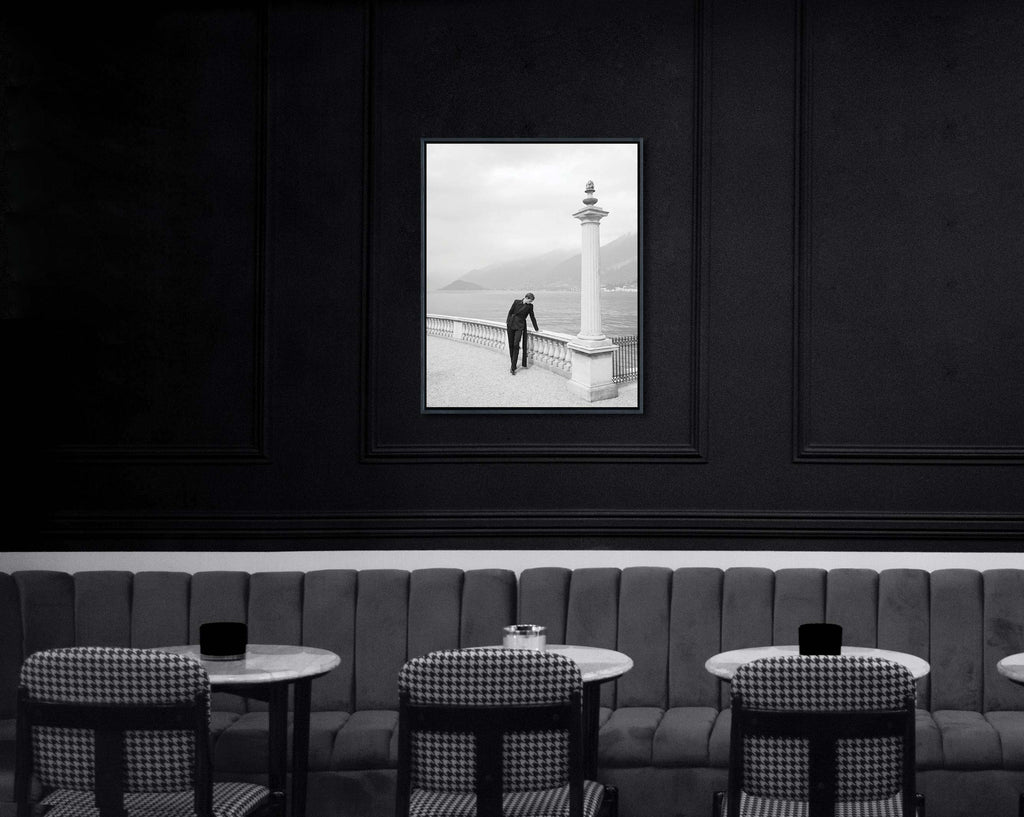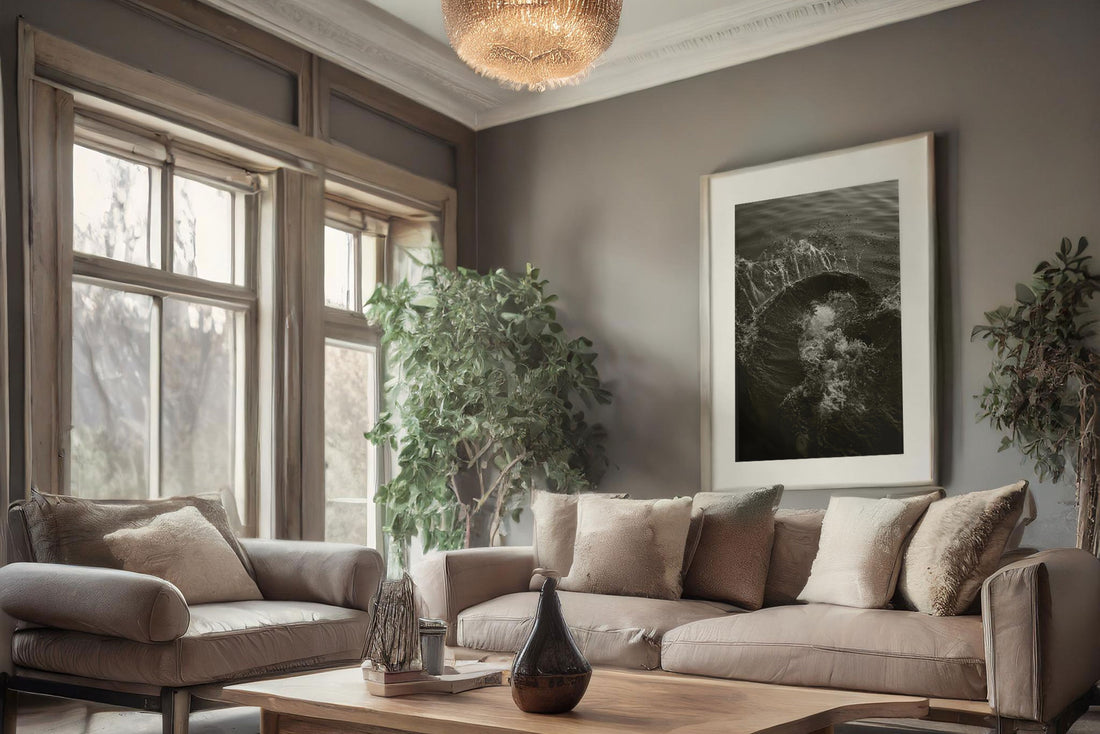If you’re embarking on an art-collecting journey, you may encounter a lot of jargon. However, understanding some of this basic terminology will help you make an informed purchase, whether it is a print or a large original painting.
For example, within the world of prints, you will come across the phrase ‘museum-quality print,’ including on our site. At Tones Gallery, we proudly offer museum-quality prints by emerging artists, and we want to express the importance of opting for these high-quality prints. As the name suggests, a museum-quality print meets the standards of large art institutions, and it’s absolutely something you want to seek out as a collector!
In this blog post, we will dissect the term (and a few others along the way) and explain why it is important to keep an eye out for it as you purchase prints.

Artwork by Andreas Ortner
Understanding The Importance of Archival Quality
The concept of an artwork being archival is at the centre of a museum-quality print. Artists deal with this on a daily basis in the materials they buy since it’s crucial to use archival media during the creation process. However, collectors should also grasp what makes something archival because that is the major factor in being museum-quality. How will it stand the test of time? How will the image look in 5, 10, 20 years under proper care?
Of course, museums are concerned with carefully controlled temperature, humidity, and handling, but it all starts with the materials of the physical artwork. This applies to the casual collector, too. After you have your print, it’s not a bad idea to think about your house as a museum when it comes to caring for artwork!
While there will be some amount of fading with any organic material, archival-quality ones will last for much longer and, therefore, make a better investment. Many different factors influence how archival a print is, but the two big ones are the paper and the ink, which we will get into below. With the proper care, museum-quality prints can stay in pristine condition for many years.
Take this as heed of caution, though: ‘archival’ has become somewhat of a buzzword within the art industry, and it’s important to properly research beforehand to verify that the materials being used sufficiently fulfil that claim.

Artwork by Marco Maljaars
Choosing the Right Paper
Let’s move on to the actual paper that a museum-quality print should use.
At Tones Gallery, we use Hahnemühle 308, which is one of the most popular archival papers globally. Made of white cotton, Hahnemühle 308 has a rich, soft feel and very subtle texture, allowing for especially strong ink adherence. Additionally, the paper is acid-free, which is an important quality in making something archival. The coating contains barium sulphate, allowing for increased tonal range and clarity. Additionally, areas with ink will have a soft sheen, while areas left unprinted will retain the paper’s sophisticated matte surface.
Cotton rags like Hahnemühle 308 are best for museum-quality prints because the paper doesn’t have acid or optical brighteners, which can trigger more fading over time. Additionally, we want the paper to bring out the best in each artwork—Hahnemühle 308 allows for the dimension of various artworks to pop and do justice to the original work.

Artwork by Chris König
Understanding Different Inks
Of course, the actual printing process—that is, ink being laid onto paper—is paramount to creating a museum-quality print.
This area of print terminology, frankly, can get a little confusing. With the rise of photography and advanced printing methods, many new terms have come into circulation. For example, we may hear giclée (a term from the 1980s that is now generally applied to high-quality inkjet prints—however, it can mean different things at different vendors), digital archival prints, fine art prints, and museum-quality prints. These are often used interchangeably, but they may have differences, and it’s important to investigate before buying one. Ensure that the materials used to make the prints are outlined before you purchase, and inquire if they aren’t.
At Tones Gallery, we use a matte premium inkjet coating for our prints. Using a very high-quality inkjet printer and special inks will give you a print that resists fading due to atmospheric conditions, even just average day-to-day lighting, and is the next best thing to owning the original. This printing process, paired with excellent paper, allows for excellent colour matching, detail, and dimension so that the image sitting on the artist’s computer screen translates as accurately as possible to a physical print.

Artwork by Tom Kluyver
Framing Your Museum-Quality Print
Going a step further, the framing of a piece impacts its archivalness. As a collector, you can choose to frame your original artwork or limited edition print with the highest-quality frame. For example, you can invest in UV-filtered glass as a way to further protect and preserve your new purchase from light, dust, smoke, and other atmospheric hazards. By framing your print, you can also handle it a bit easier without touching the actual surface.
If you want to keep your print museum-quality, ensure you’re not accidentally introducing harmful materials. For example, be weary of any adhesive used near the print, as many of them contain acids and will cause yellowing. In general, it’s best to consult a professional framer if you want to go the custom-framing route. If you’re going to be displaying your print, consider the conditions in which it will reside. Even museum-quality prints that are age-resistant will benefit from these considerations.
If you’re interested in framing and want to learn more, read our post on it here—there’s quite a bit to think about, from aesthetics to protective qualities! At Tones Gallery, you can choose to purchase a custom floating frame with your print.

Artwork in image by Tom Kluyver
Investing in a Museum-Quality Print
The takeaway from understanding museum-quality prints is simply understanding the materials of your artwork, especially the paper. When purchasing a print, ensure you are investing in one produced with the intention of it lasting a long time.
At Tones Gallery, our printing technique combined with our archival cotton-rag paper results in vivid colour, deep blacks, and breathtaking detail to form a beautiful museum-quality print that will resist the effects of time. We are proud to sell prints that satisfy both the artist and art collector by using the best materials. When you buy a museum-quality print, you invest in long-lasting artwork that you and your family can enjoy for years.

